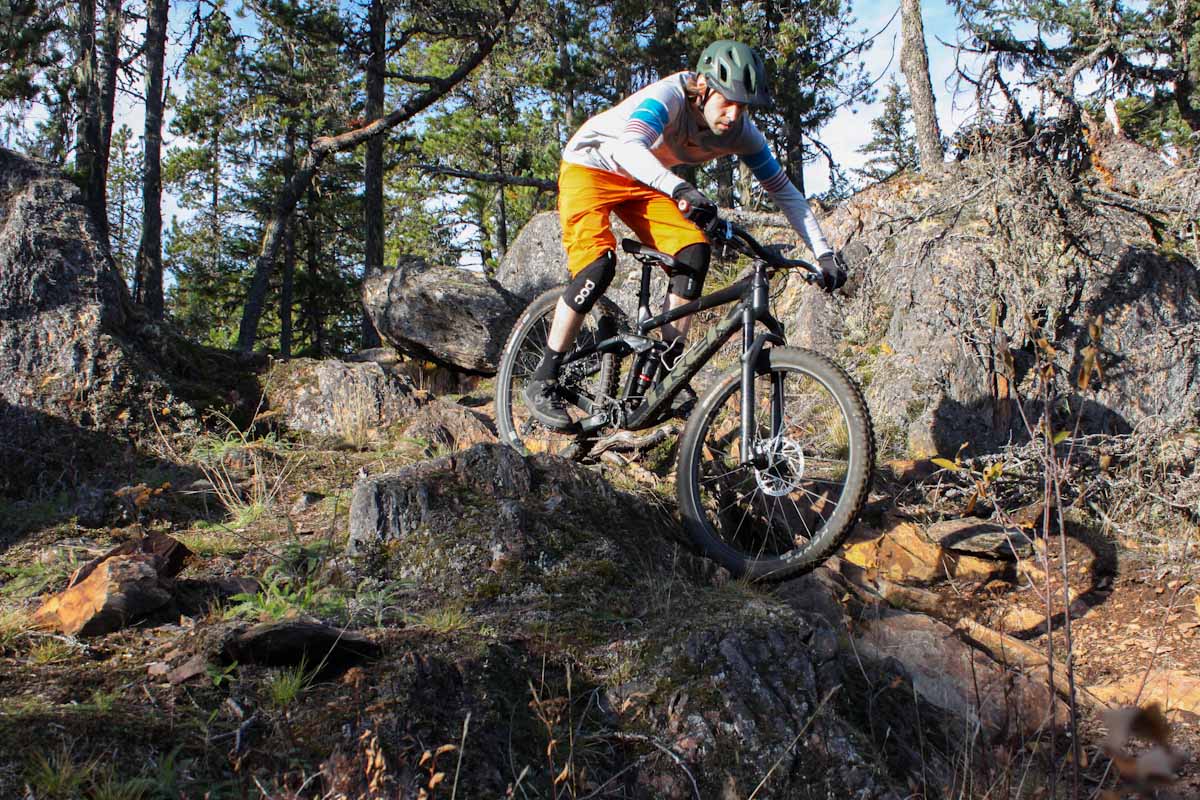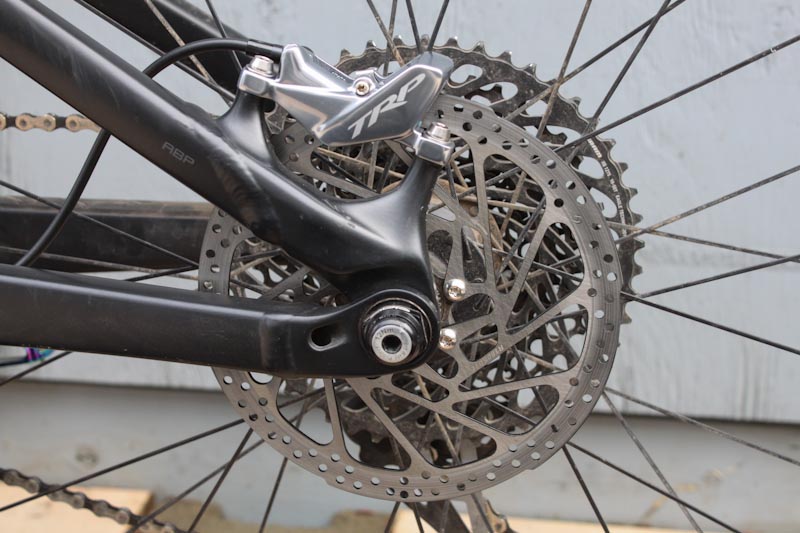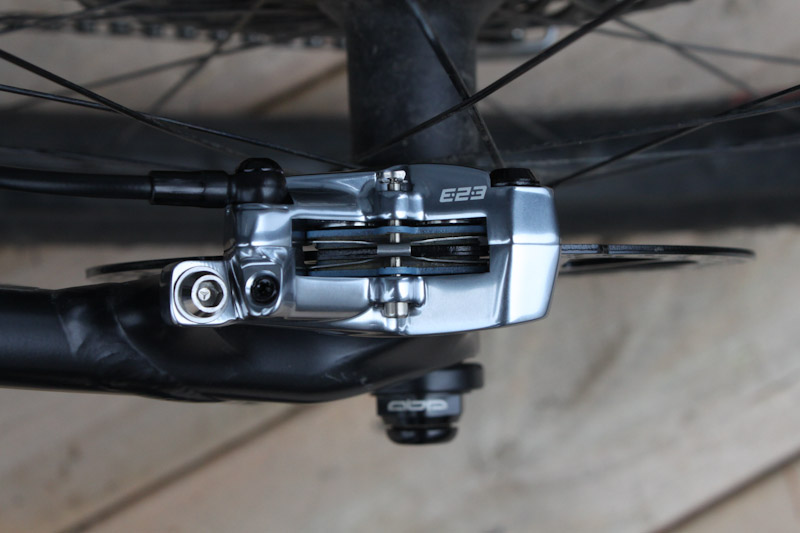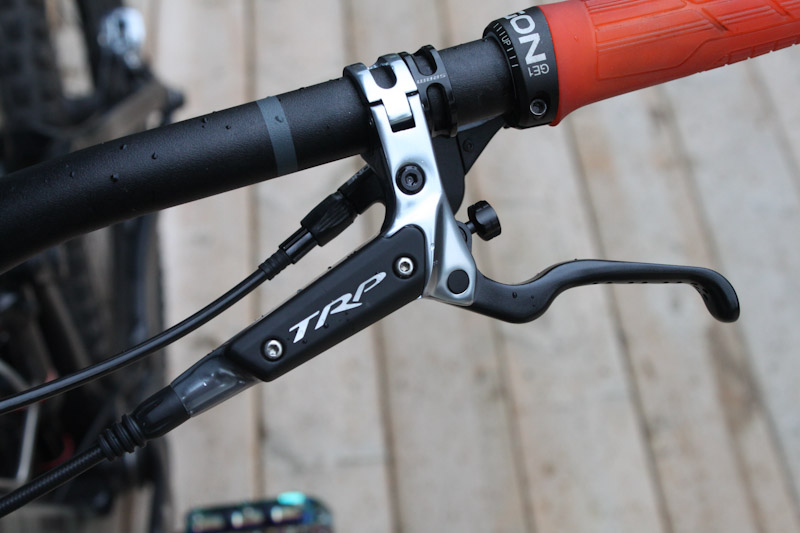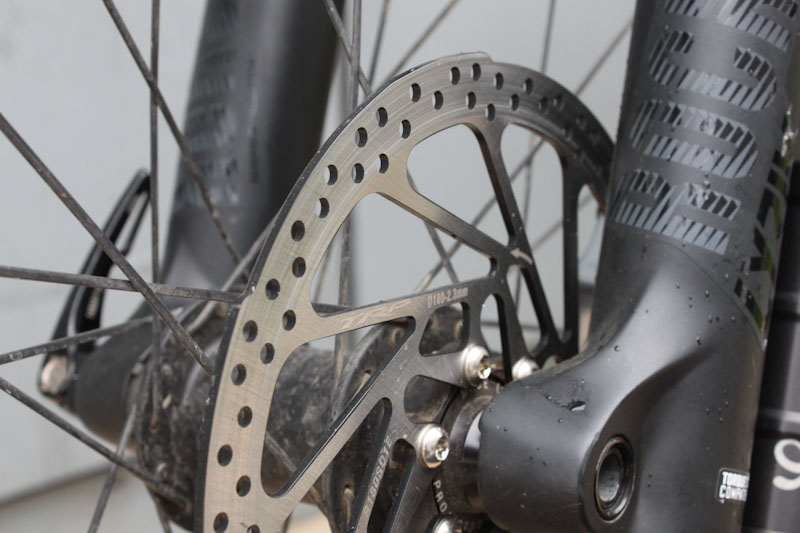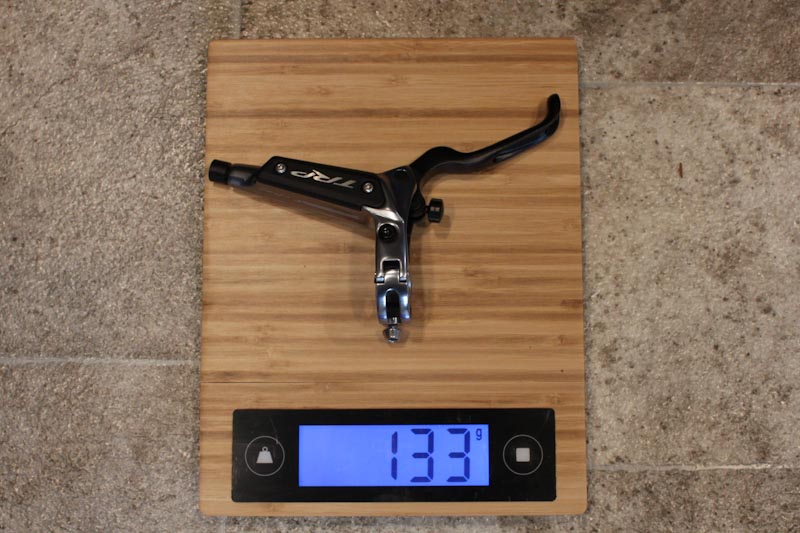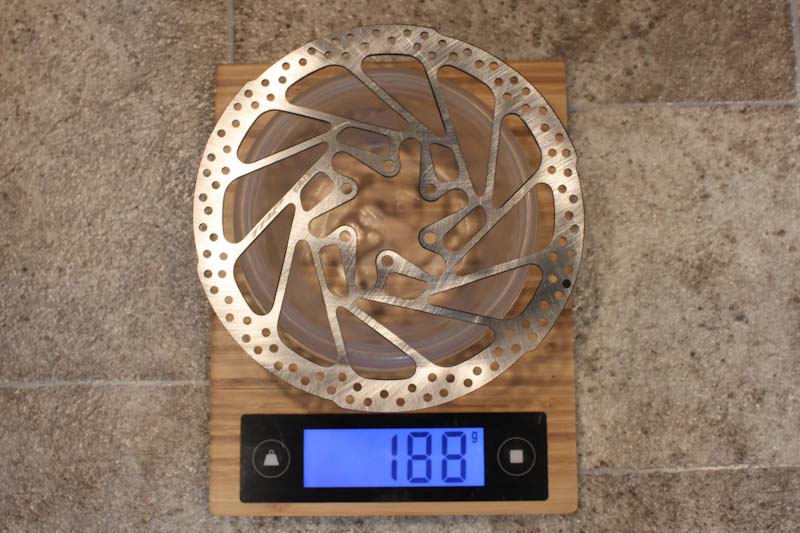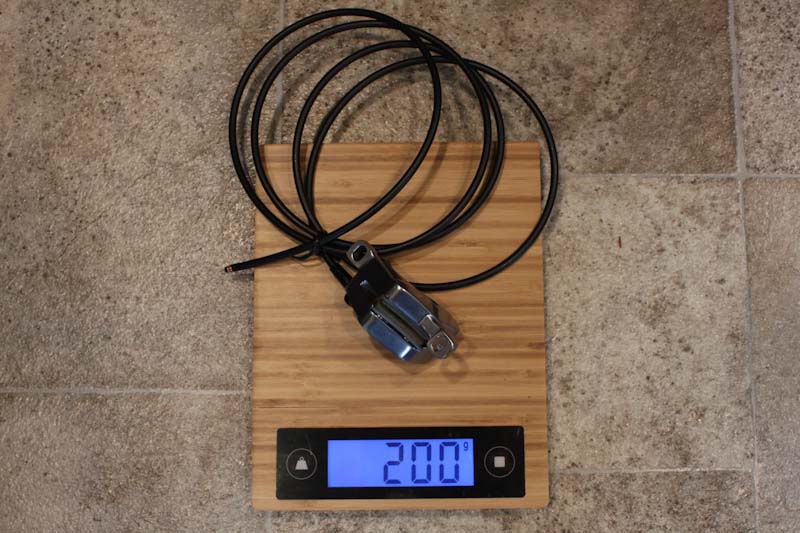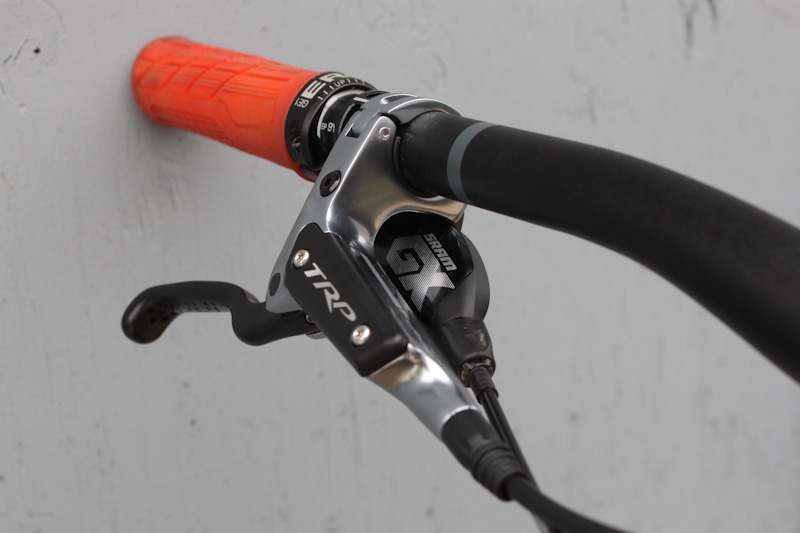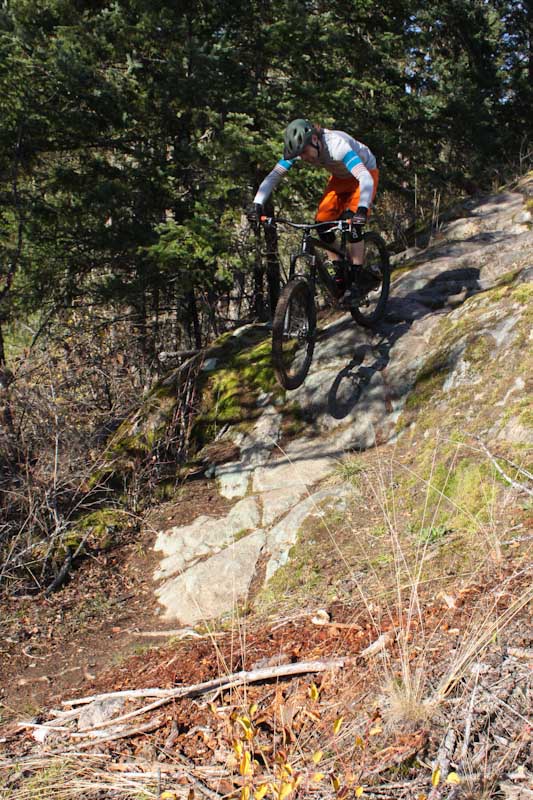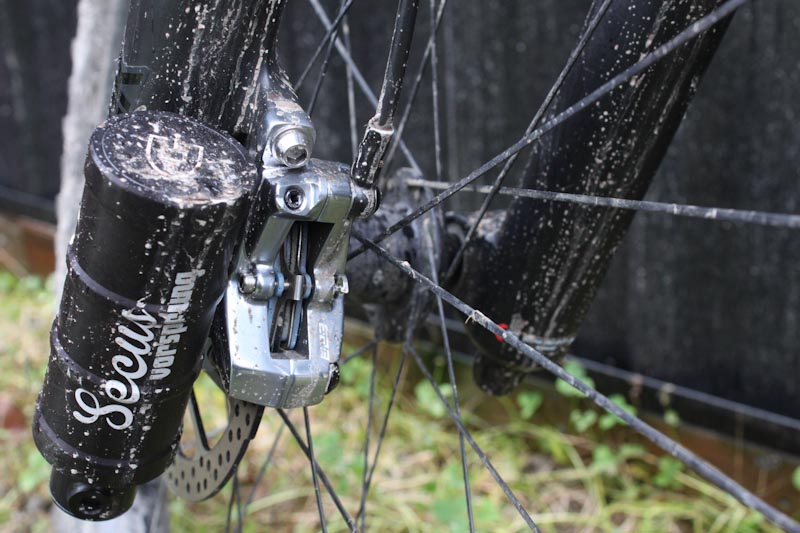As the oligarchy of OEM equipment it’s easy to get familiar with Shimano or SRAM components, and tempting to stick with one brand or the other. I recently got to break that cycle myself and try TRP’s DH-R EVO brakes this fall. I found their construction and performance comparable, if not better in ways, than similar offerings from the big two.
There’s no shortage of bite force in the DH-R EVO’s, but what I liked is how that force is applied. I felt their modulation falls right between SRAM’s and Shimano’s (and yes I am generalizing those brands’ characteristics a little), making it easy to avoid unwanted wheel lockup. However, when you need to reel things in quickly, a ton of braking power is just a slight squeeze away.
The new DH-R EVO is a complete update on TRP’s DH-R brakes: nearly everything about them was improved as TRP worked with DH racers Aaron Gwin, Neko Mulally and Luca Cometti throughout the 2019 World Cup season. As many DH bikes are now running 29” wheels, TRP made sure their new brakes would offer enough power to slow them down appropriately.
The DH-R EVOs feature 4-piston calipers, which sit over TRP’s 2.3mm thick rotors. Despite those beefy characteristics, the brakes were kept lightweight enough to be a reasonable option for not just DH or eMTB, but also enduro or trail bikes. I opted to stay out of the bike parks this year, so I put the DH-R EVOs on my Trek Remedy and spent the fall bombing the steepest, fastest trails in my area.
TRP DH-R EVO construction:
Updates to the DH-R EVO include new lever blades, a new brake pad compound, new 5mm brake hoses and a new high-performance mineral oil. The updated resin brake pads offer increased thermal stability and a shorter bed-in process, while the mineral oil TRP is now using has a lower viscosity and increased heat stability. TRP also increased oil flow inside the calipers for quicker braking response, dialed in a new hydraulic leverage ratio, and employed a smaller master piston.
The DH-R EVO levers feature forged and CNC machined bodies with a polished finish. The alloy lever blades have dimples and drilled holes for grip, an ergonomic shape and tool-free reach adjustment. The handlebar clamp is hinged, making for easy installation.
The four piston calipers have forged, machined and polished alloy bodies. TRP’s rotors are 2.3mm thick as opposed to the usual 1.8mm: They say these rotors increase heat stability by 8%, and offer 47% more lateral stiffness. I ran six-bolt rotors on my bike, but some sizes are available for Shimano Centerlock hubs as well.
While you won’t see one in my photos (I didn’t need any adapters for my 180mm rotors), TRP also updated their CNC machined brake adapters to be stiffer, and clearly marked for easy installation.
TRP’s claimed weight is 310g for a front brake with no rotor or adapter. I checked the components as they arrived on my scale, and found the following weights; 188g for a 180mm rotor, 133g for one lever, and 200g for a caliper with an uncut hose (Keep in mind the caliper, hose and lever are pre-filled with fluid).
That all adds up to 521g per brake, but in reality you’ll come in lower after the hoses are cut down.
Installation notes:
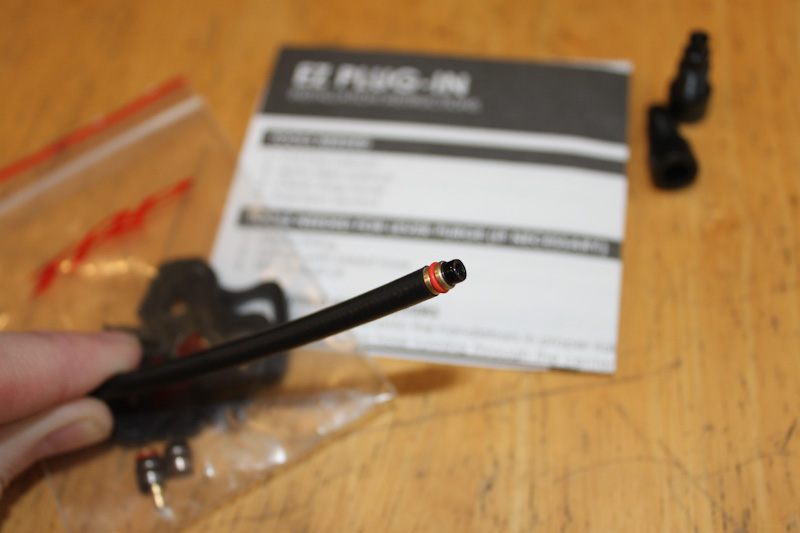 I’m quite impressed with TRP’s EZ-Plug installation. The DH-R EVO brakes come pre-filled, so if everything goes well all you have to do is trim the hoses, install the hose end hardware and screw them into the levers. I’ll never claim to be a great mechanic, and I had no issues installing these brakes. I got them set up just fine following the provided instructions, but TRP has a YouTube tutorial that includes a few tips the written instructions don’t. If you’re not experienced installing hydraulic brakes, I’d recommend watching the video.
I’m quite impressed with TRP’s EZ-Plug installation. The DH-R EVO brakes come pre-filled, so if everything goes well all you have to do is trim the hoses, install the hose end hardware and screw them into the levers. I’ll never claim to be a great mechanic, and I had no issues installing these brakes. I got them set up just fine following the provided instructions, but TRP has a YouTube tutorial that includes a few tips the written instructions don’t. If you’re not experienced installing hydraulic brakes, I’d recommend watching the video.
After the EZ-Plug installation, the DH-R EVOs felt good enough to get riding right away without bleeding. My first ride confirmed the plug and play system worked perfectly for me, leaving me with an even pull on both sides. Since setup I haven’t had any need to re-bleed the brakes.
One downside of straying from my SRAM brakes was losing my clean Matchmaker setup, as the TRPs are not compatible. I had no issues with my One-Up dropper post lever, but the rear brake lever’s clamp left just enough room for my SRAM GX shifter- I did get the brake and shifter where I wanted them, but with little room to spare.
TRP’s levers sit fairly far out, so they’ll definitely work for those who like a longer pull. I don’t, but thankfully their tool-free reach adjusters offer enough range to bring them in considerably. I appreciate TRP’s convenient hinged lever clamps, and the caliper’s banjo bolts help to ensure smooth cable routing.
Ride Impressions:
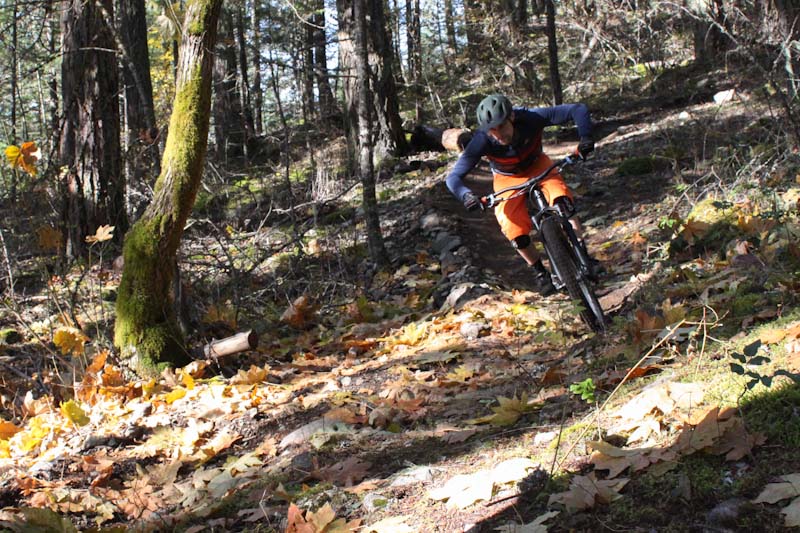
I got my hands on the DH-R EVOs just as the weather turned ugly in early October. While I never got the chance to really cook them in hot summer temperatures I did my best to strain them with several longer descents, and they fought through some sloppy conditions during my fall/early winter test rides.
TRP says their new brake pads will break in quickly, and they did. After my first loop and about 7-8 minutes of descending, the pads were at least 90% bedded in and were grabbing well. Despite getting wet and muddy on most of their test rides, the brake pads haven’t produced any annoying squeaks so far.
The DH-R EVO’s modulation is a bit different than what I typically find in Shimano or SRAM’s brakes. Again, I know I’m generalizing things but usually SRAM’s brakes offer the most modulation, and require a lot throw to go from initial bite to full force. With Shimano (especially XTs) they tend to transition from a soft touch to a powerful bite much quicker. The DH-R EVOs fell right in between the two: There is an adequate, predictable range between pad contact and heavy braking, but when you want wheel-locking force the TRPs bring it on quickly. I liked the DH-R EVO’s ‘best of both worlds’ feel; they modulate well enough for precise brake control, but when you want full bite you’ll get it with just a little extra squeeze.
I quickly noticed I could rely on the DH-R EVO’s power to slow me down in a hurry. Where I would usually squeeze my SRAM brakes more gradually as I tackled a tight corner, with the TRPs I approach with a slight drag, then wait until the last second and give them a quick, hard bite. To me this means I can carry speed further into corners, and quickly save myself from blowing a berm if I come in too hot. As for their maximum power, it’s safe to say the DH-R EVOs should satisfy any rider.
In fall’s cooler temps I didn’t really get to test the heat resistance of TRP’s 2.3mm rotors, but I can tell you that I noticed no reduction in braking power after switching out my 200mm front rotor for the 180mm TRP… the calipers are powerful enough to make up for that difference. While I haven’t put a ton of miles on these brakes, there are no indications of excessive wear and tear on the rotors or pads.
All in all TRP’s DH-R EVO brakes left me pretty impressed. Their EZ-Plug setup was simple and worked like a charm, and I’ve had no mechanical issues throughout my test. On trail, I like how they modulate well but ramp up the bite force quickly when you need it. The only downside to the DH-R EVO brakes is their lack of a matchmaker style system for neatly mounting your shifter/dropper post lever. I’ll be keeping these brakes on my trail bike for next spring!
The DH-R EVOs sell for $229 per brake, or $460 for an OEM set with EZ-Plug hoses (which can go regular or moto) and a free pair of socks.
